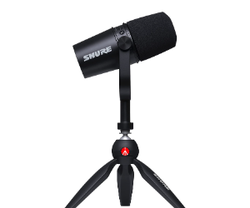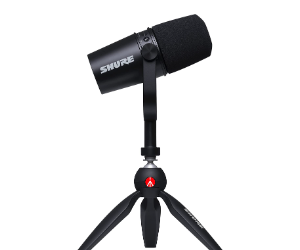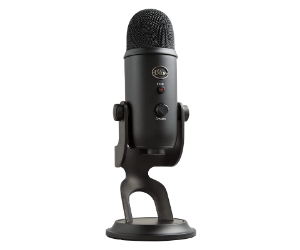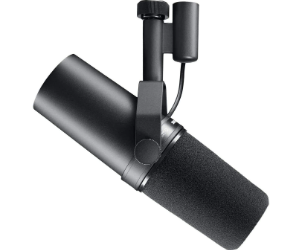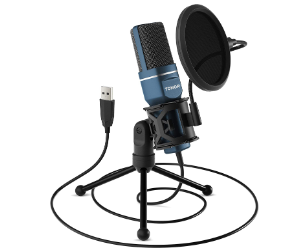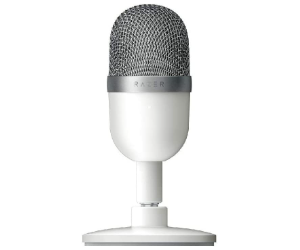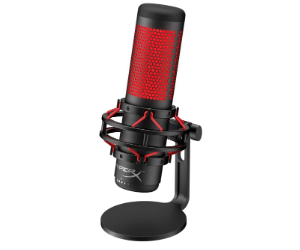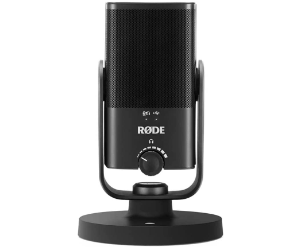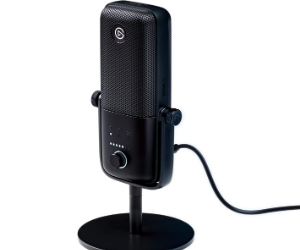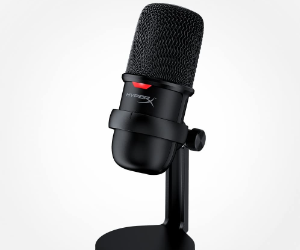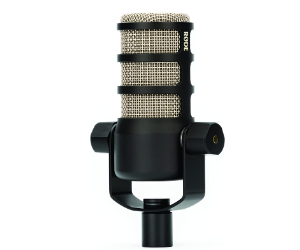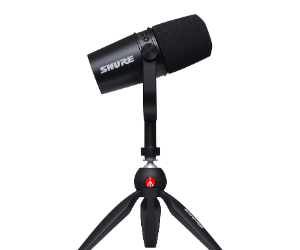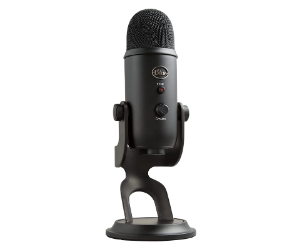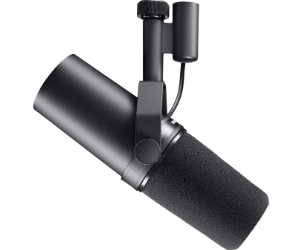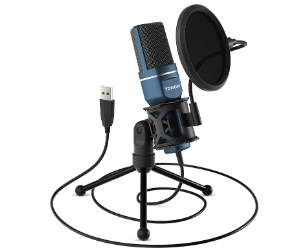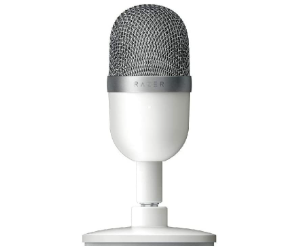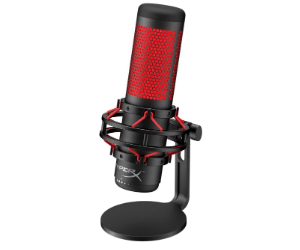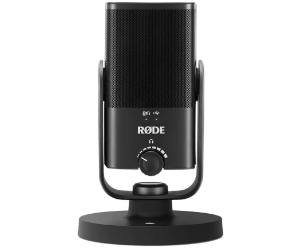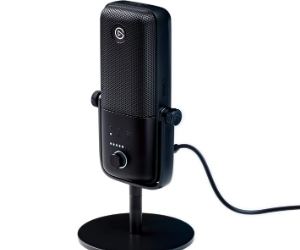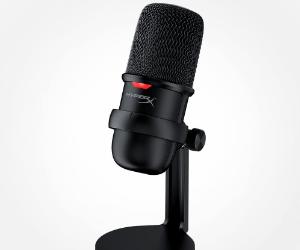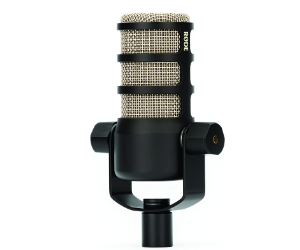Best Microphone for Streaming

If you're a professional streamer or just starting out, finding the best microphone for streaming is important. There are many different options on the market, so it can be hard to know which one is right for you. In this review, we'll take a look at some of the best microphones for streaming and help you decide which one is right for you and your needs. Read on to learn more!
10 Best Microphone for Streaming
Detailed Overview
Let's take a closer look at each microphone so you can find the one that's right for you.
Author's Choice
The Shure MV7 is a professional-grade podcast microphone that offers XLR output for digital or analog recording. It features an intuitive touch panel for easy control over gain, monitoring volume, headphone mix, and mic muting. The all-metal construction provides outstanding reliability and the built-in headphone output lets you monitor your recordings in real-time. The MV7 also provides access to audio processing, Auto-Level Mode automatically adjusts gain and compression settings, switchable EQ filters to adjust audio tone color and options to save custom user presets. It is available in black and gray. The kit includes a tripod to mount the microphone.
Pros:
- USB Connector
- XLR output allows digital or analog recording
- Great for podcasting, recording, live streaming
- Intuitive touch panel
- Built in headphone output
- Audio Sensitivity 132 dB
Cons:
- Uses micro-USB, not Type-C
People's Choice
Logitech for Creators Blue Yeti is a professional USB microphone that delivers clear, powerful broadcast-quality sound for YouTube videos, streaming games on Twitch, podcasting, Zoom meetings, recording music and more. It has four directivity patterns: Flexible cardioid, omni, bi-directional and stereo directivity patterns allow you to record in ways that usually require multiple mics, for vocals, instruments and podcasts. The microphone also features headphone volume, model selection, instant mute, and microphone gain controls for complete control of the recording and audio streaming process. The positionable design of the microphone allows you to mount it on your desk in seconds or plug it directly into a microphone stand or boom for a more professional look. Works with Mac or PC. Simple and high-quality is about Logitech Blue Yeti. Available in many colors - blue, pink, white, black.
Pros:
- Clear broadcast vocal sound
- Four pickup patterns
- Onboard audio controls
- Positionable design
- Plug 'n Play
- Custom three-capsule array
- Audio Sensitivity 120 dB
Cons:
- Low mic stand
- Delicate ports
Premium Choice
The Shure SM7B is a dynamic microphone ideal for studio recording, home recording, podcasting and streaming. The microphone has a smooth, flat frequency response that provides clear and natural reproduction of both music and speech. The SM7B also features an air-suspended shock absorber and pop filter to eliminate mechanical noise and breathing. Advanced electromagnetic shielding protects against hum from computer monitors and other studio equipment. The cardioid pattern is designed to suppress off-axis sound, allowing you to reproduce the sound you want with minimal coloration. The XLR connection along with the audio interface gives you more control over the sound, which improves the overall sound quality.
Pros:
- XLR Studio Mic for Music & Speech
- Wide-Range Frequency, Warm & Smooth Sound
- Rugged Construction
- Sound protection
- Detachable Windscreen
- Signal-to-Noise Ratio 60 dB
Cons:
- A little heavy
Best Budget
The TONOR microphone is a USB microphone with a cardioid directional pattern that allows for clear, even, and crisp sound in front of the microphone while suppressing unwanted background noise. The shock mount can be unscrewed and attached to a 5/8'' threaded stand for use in conferencing, distance learning, streaming, chatting, podcasting, video recording, Zoom, Skype and YouTube. TONOR without any assembly, you just need to deploy the three-legged stand and adjust its position. Plug it in and go to work.
Note: If the threaded insert your rack is equipped with is a 3/8'' thread, an adapter from a 3/8'' female thread to a 5/8'' male thread is required.
Pros:
- Excellent audio quality
- Fairly compact
- A true plug & play kit
- No software needed
Cons:
- Microphone feels budget
- USB is not detachable
Best Mini
The Razer Seiren Mini is a professional-grade microphone that offers stellar sound quality and a discreet, minimalist design. It features a 14mm condenser capsule for clear, crisp audio reproduction, and a flat frequency response that captures all the highs and lows of your voice. The mic also has a tight pickup angle to focus on your voice while reducing background noise, and a heavy-duty tilting stand for stable, optimal positioning. It can also be detached and mounted on a boom arm or mic stand with a standard 5/8-inch thread. Additionally, the Seiren Mini is shock resistant and features an inbuilt shock mount to dampen vibrations, ensuring that your stream is protected against sound anomalies. Available in white, black, pink.
Pros:
- USB Type-A
- Focus on your voice while ensuring that background noise is not picked up
- Minimalist design, easy to take with you
- Great sound
- It can also be mounted on a boom or microphone stand with standard 5/8-inch threads
- Shock-resistant stand with built-in mount that damps vibrations
Cons:
- Minimum features
Best Gaming Microphone
The HyperX QuadCast is a versatile USB microphone ideal for streaming, gaming, and podcasting. The microphone features four selectable polar patterns, allowing you to optimize your setup for the best sound quality. The QuadCast also features a built-in anti-vibration mount, mute sensor and LED status indicator. The universal adapter fits both 3/8-inch and 5/8-inch threaded setups and is compatible with most microphone stands or tripods. The internal filter helps block plosive(Explosive consonants) sounds from entering the microphone, and you can control the microphone through the headphone jack. The HyperX QuadCast delivers great sound quality when connected to your PC, PS5, PS4, or Mac. Available in black (with red and RGB Lighting) and white ( RGB Lighting).
Pros:
- USB
- Easy to set use
- Cool lighting
- Tap-to-mute sensor with LED status indicator
- Four selectable polar patterns
- Easily adjust your mic sensitivity
- Compatible with most mic stands or boom arms
Cons:
- Touch-sensitive mute button
Best for Entry Level Content Creators
The Rode NT-USB-Mini is a USB microphone with a cardioid polar pattern and a built-in pop filter. It has a magnetic base and a 3.5mm headphone jack. Connect to audio without distracting delays or echoes with the high-quality USB output. If you want to record professional quality podcasts with ease, the NT-USB Mini is fully compatible with free RØDE Connect podcasting software for Mac and PC, making high quality recording easy, even if you have little or no audio experience. Record crystal clear, professional-quality audio directly to your computer or tablet with Rode NT. If you're a gamer, podcaster, musician, streamer, or any other content creator, this microphone is perfect for you.
Pros:
- USB
- 3.5mm headphone jack
- Connect Mac and PC
- Simple Compact Design
Cons:
- Low mic stand
- Picks up background noise
Best for Streaming
Wave 3 is a USB-C condenser microphone with up to 24-bit/96 kHz analog-to-digital conversion, Clipguard technology to prevent distortion, and a cardioid polar pattern for accurate speech capture. The Wave Link app lets you control settings and microphone levels, and the sleek metallic design looks great on any desk. Available in black and white. The microphone is very easy to operate and great for streaming content. If you want to raise the microphone higher, you can consider the Elgato Wave Mic Arm or Wave 3 microphone boom arms.
Pros:
- USB-C
- Clear audio
- Digital mixer
- Simple mounting
- Audio Sensitivity 15 dB
Cons:
- Single polar pattern
Best Hi-Res Recording
The HyperX SoloCast is a professional USB microphone that is perfect sound for podcasting, game streaming, and other online content creation. It features plug and play compatibility with a USB-C connection, high-res 24-bit/96kHz recording, and a tap-to-mute sensor with LED status indicator. The flexible, adjustable stand swivels to support a variety of setups, and the built-in mount adapter fits 3/8-inch and 5/8-inch threads, making it compatible with most mic stands or boom arms. The HyperX SoloCast is compatible with PS4, PC, PS5, and Mac. Available in black and white.If you want to raise the microphone higher, you can pay attention to Boom Arm Stand.
Pros:
- Plug N Play audio recording with USB-C connection
- Tap-to-Mute Sensor
- Boom arm and mic stand threading
- Flexible, adjustable stand
- Hi-Res 24-bit/96 kHz recording
Cons:
- Low mic stand
Best for Podcasts and Live Broadcasts
The Rode PodMic is a high-quality all-metal microphone with cardioid dynamic transmission and an integrated pop screen. This makes the microphone extremely gentle to use, and the internal shock mount reduces rumble and keyboard noise. The dynamic capsule focuses on the sound of your voice, making it ideal for podcasts and live broadcasts. The PodMic will deliver great results with any XLR mixer or interface, but it really shines when paired with the RØDECaster Pro.
Pros:
- XLR Connector
- Rich sound
- High-quality all-metal construction
- Hinges on mount allow for flexible positioning
Cons:
- No built-in audio filters
.png)
Best Microphone for Streaming - Buyer’s Guide
What to look for before buying a streaming microphone?
Polar Pattern
Polar pattern microphones are designed to receive sound from a specific direction or angle.
- Cardioid microphones are designed to pick up sound directly in front of the microphone.
- Omnidirectional microphones receive sound from all sides. But in addition to your voice, they can also pick up unwanted background noise.
- Bidirectional microphones are designed to receive sound from both the front and back of the microphone.
Each type of polar pattern microphone has its own advantages and disadvantages, so it's important to choose the right one for your needs.
The cardioid will be very important if you are using this microphone in streaming or podcasting.
Bidirectional and Omni-directional will be fine if you still want to use the microphone for one-on-one interviews or group calls.
Frequency Response
The frequency response of a microphone tells you the range of frequencies that your microphone can pick up. The standard frequency response is 20 Hz to 20 kHz.
Connecting
Here you can choose USB or XLR microphone, and in principle you can achieve almost the same sound quality with either connection method. It all depends on your preference.
USB microphones are becoming increasingly popular for a number of reasons. First, they're very easy to set up - just plug the microphone into a computer's USB port and you're ready to go. In addition, USB microphones are more affordable, making them a great option for beginning streamers.
XLR microphones are the choice for most professional streamers because they provide excellent sound quality. But XLR microphones require more investment than other types of microphones because they require an XLR cable, an audio interface (or mixer) and a digital audio workstation (DAW). However, XLR microphones are more reliable and resistant to rough handling, making them worth the investment for many professionals.
Digital Signal Quality (bit depth/sampling rate)
Digital audio signals consist of a series of bits that represent the amplitude, or loudness, of the sound at any given time. Bit depth refers to the number of bits used to represent each sample, and has a direct effect on the dynamic range of the signal. Dynamic range is the difference between the loudest and quietest sound that can be represented by a signal, and it is limited by bit depth. A typical bit depth is 16 bits, which provides a dynamic range of approximately 96 dB.
Sampling rate is also an important factor in determining digital signal quality. It refers to the number of samples per second and is usually measured in kilohertz (kHz). A higher sampling rate gives a higher quality signal because more information is captured per second. For example, a sampling rate of 44.1 kHz is commonly used for CDs and a sampling rate of 96 kHz for high-end audio applications.
Build Quality
Build quality is an important consideration when choosing a microphone. In general, high-quality materials and careful construction ensure the best sound quality. If you plan to use the microphone on the road, on trips, look for one that will stand up to rough handling.
.png)
Best Microphone for Streaming - FAQ
What is the best microphone for podcasts?
Here we go back to what we wrote about above and pay attention to the polar pattern of the microphone and their varieties.
Cardioid: The sound is recorded in front of the microphone. Ideal for voice-over, vocals, and streaming. You can also use bi-directional: Captures the sound in front of and behind the microphone. Ideal for one-on-one interviews.
What is the best microphone for streaming?
Cardioid and bi-directional, which picks up sound directly in front of the microphone and doesn't pick up much sound from the environment.
Do I need a microphone boom bracket, shock mount or pop filter?
Some mics don't have much of a leg, but the distance of the mic to you makes a difference. Then brackets come into play.
A boom arm certainly helps to get rid of clutter on your desk when you already have little space and nowhere to put the microphone. They almost always attach to the side of the table and are very handy for keeping the microphone handy, but also move it around if you don't need it anymore. You can find out more in our review Best Microphone Boom Arms.
A pop filter can help reduce sound interference from human breathing
A typical pop filter consists of one or more layers of acoustically translucent materials, such as nylon, stretched around a circular frame. Metal pop filters use a thin sieve of metal instead of nylon. You can also create an improvised pop filter, for example, from pantyhose stretched over a sieve or hoop.
The most important thing is that the pop filter should not touch the microphone, as vibrations from it will be directly transmitted to the microphone.Thus, using a pop filter can extend the life of the microphone.
Shock mounts prevent vibrations from going through the microphone stand or boom and hitting the microphone, which can be a form of rustling, knocking or other unwanted noise. This is a must-have for music studios.
Conclusion
We have looked at many different options for streaming microphones. Each of them has different features. All you have to do is choose a microphone that's right for you and your needs. Whether you will be streaming games or recording podcasts, we have some great options for you to choose from. Take your pick and enjoy. Thanks for reading.
